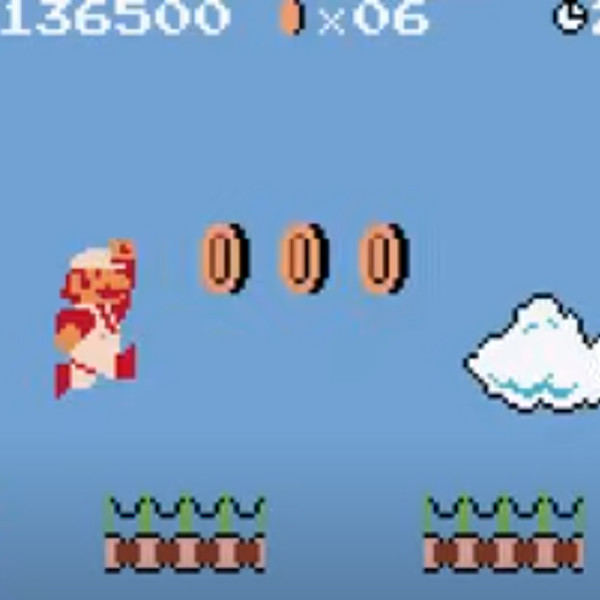.png)
Gameboy
The Game Boy, released by Nintendo in 1989, is one of the most iconic handheld gaming devices in history. It was designed by Gunpei Yokoi and featured an 8-bit CPU, a monochrome screen, and a compact form factor that made it portable and easy to use.
Design: The original Game Boy was relatively bulky compared to modern handhelds, but it was praised for its durable build. It had a simple button layout with a D-pad, two action buttons (A and B), and start/select buttons.
Games: The Game Boy library included classic titles such as Tetris, Super Mario Land, The Legend of Zelda: Link's Awakening, and Pokémon Red and Blue, which played a significant role in establishing the Pokémon franchise's popularity.
Battery Life: It ran on four AA batteries, providing an impressive battery life of up to 30 hours, which was a major advantage over competitors like the Atari Lynx and Sega Game Gear.
Impact: The Game Boy popularized portable gaming and laid the foundation for future handheld devices, including the Game Boy Color and Nintendo DS. Its success helped Nintendo dominate the handheld market for years.
Pokemon games
The Pokémon games on the Game Boy, particularly Pokémon Red, Blue, and later Yellow, played a pivotal role in shaping the franchise and the gaming landscape as a whole. Here are some key points about these iconic games:
1. Introduction of the Pokémon Universe
Released in Japan in 1996 and in North America in 1998, Pokémon Red and Blue introduced players to the world of Pokémon, where they could catch, train, and battle a diverse range of creatures. This marked the beginning of the Pokémon phenomenon that has continued for decades.
2. Gameplay Mechanics
The games combined RPG elements with turn-based battles, allowing players to strategize their moves during Pokémon battles. Players would travel through the Kanto region, defeat Gym Leaders, and aim to become the Pokémon Champion.
3. Trading and Connectivity
A revolutionary aspect of the Pokémon games was their emphasis on trading. Players could connect their Game Boys using a link cable to trade Pokémon, which was essential for completing the Pokédex. This feature fostered a sense of community and interaction among players.
4. Unique Features of Pokémon Yellow
Released in 1998, Pokémon Yellow was a special edition that allowed players to have Pikachu follow them around, similar to the anime. It also featured a more streamlined story that aligned with the show's narrative.
Zelda games
The Legend of Zelda series made a significant impact on handheld gaming with the release of The Legend of Zelda: Link's Awakening for the Game Boy in 1993. Here are some notable aspects of the game and its influence:
1. Unique Storyline
Link's Awakening follows Link as he washes ashore on the mysterious Koholint Island. To escape, he must collect eight musical instruments to awaken the Wind Fish. The story is notable for its dream-like quality and quirky narrative elements, deviating from the typical Zelda lore.
2. Innovative Gameplay
The game retains the action-adventure mechanics of previous Zelda titles, featuring puzzles, exploration, and combat. It introduced new gameplay elements like the ability to collect and use items to solve puzzles, and it included a variety of dungeons with unique bosses.
3. Graphics and Sound
Link's Awakening showcased the Game Boy's capabilities with its charming 2D graphics and a memorable soundtrack. The visual design, inspired by The Legend of Zelda: A Link to the Past, combined colorful sprites with detailed backgrounds.
4. Diverse Characters and Humor
The game features a cast of memorable characters, including the quirky inhabitants of Koholint Island. The inclusion of humorous elements, such as references to other Nintendo games (notably, a cameo by characters from Super Mario), added a lighthearted touch.
Mario games
Super Mario Bros. Deluxe is a port of the classic Super Mario Bros. game, originally released for the Nintendo Entertainment System (NES) in 1985. Launched for the Game Boy Color in 1999, this version brought several enhancements and features that revitalized the beloved platformer for a new generation. Here are some key aspects:
1. Enhanced Graphics and Sound
The Game Boy Color's capabilities allowed for improved graphics, featuring brighter colors and smoother animations compared to the original NES version. The sound quality was also enhanced, making the iconic music and sound effects more vibrant.
2. Additional Features
Super Mario Bros. Deluxe introduced new gameplay elements, including a new screen that showed how many coins players had collected, a "Challenge Mode" with unique objectives, and a way to track the number of enemies defeated.
3. Save Feature
Unlike the original game, which required players to restart from the beginning upon losing all lives, Deluxe introduced a save feature. Players could save their progress, allowing for more flexible play sessions.
4. Two-Player Mode
The game included a two-player mode where players could take turns playing, making it a more social experience. Players could compete to see who could achieve the best scores.
5. Original Content and Secrets
The Deluxe version added new features, including a selection of new levels and secrets, along with the ability to view the original game's manuals and artwork. This made the game a nostalgic experience for long-time fans while also introducing fresh elements.
.png)
-cropped.jpg)

